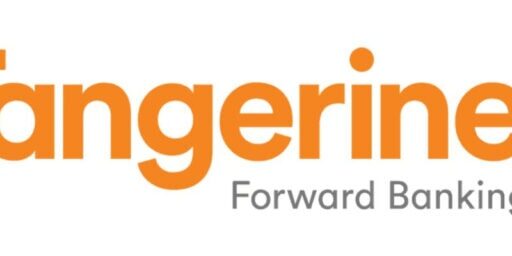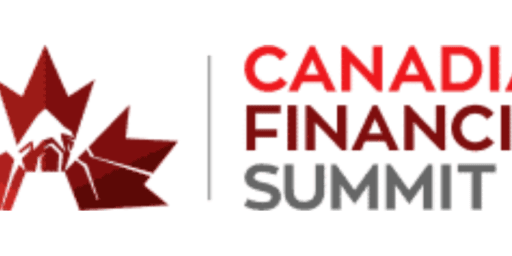How to Build a Dividend Growth Portfolio
If you’ve been following MDJ for a while, you will come to learn that I’m a fan of two investing strategies, index investing and investing for income through Canada’s best dividend stocks.
I like index investing (also known as passive investing) for its ease, low cost, and ability to beat most active mutual fund returns over the long term. I use this strategy for: my spousal RRSP; the international portion of my RRSP; and, the education fund (RESP) that I set up for my two kids.
Dividend growth investing is a completely different beast, but if executed correctly it has the potential for long term market beating returns with even less risk than index investing. As we enter 2025, I believe that these Canadian dividend stocks are some of the best inflation hedge stocks as well.
As I’ve invested more and more of my money over the years (my Smith Manoeuvre portfolio alone is getting into substantial six figures at this point) I have devoted substantially more time to research of Canada’s dividend darlings.
I’ve used that time to setup my own watchlist on Mike Heroux’s Dividend Stocks Rock platform. I’m a big fan of not only Mike’s analysis, but his monthly webinars and the unique Canadian platform that he has built from scratch.
There’s something appealing about the idea of owning a piece of the very best companies out there, being paid to own them, getting annual raises, and exerting very little effort in the process. It really is the definition of passive income. The cherry on top is that Canadian dividends get preferential tax treatment (for now).
A reader question that I often get is, “What dividend stocks should I buy?” I tend to cringe a little at that question because I believe in picking dividend stocks as part of an overall dividend portfolio strategy, rather than attempting to buy a couple stocks for a big win.
If I were to start with just a few, the dividend kings list is where I’d look first. The second place I’d go is to overlooked stocks that are part of my Dogs of the TSX strategy.
Building a Dividend Portfolio For Beginners
Having said that, what stocks would I pick to build a diversified dividend portfolio? Here is the criteria that I review when making a purchase:
- Sector Diversification – Since a large portion of our portfolio is Canadian based, I try to diversify by picking dividend stocks by sector. Some use broader sectors, but I tend to use: telecom; pipelines; banks; resources and materials; utilities; health care; retail; industrials; real estate; and, technology.
- Dividend Growth History – As previously mentioned, I follow the dividend growth investing strategy, which means that I tend to choose dividend stocks that have a history of increasing their dividend annually.
- Earnings History – Even with a solid dividend growth history, a safe bet is to make sure that their earnings are growing with the same trend as well. It may be a warning flag if earnings are decreasing while dividends are increasing. It may only be a matter of time before dividends will need to be reduced, or worse, eliminated.
- Yield above 2% (but high yields may be a warning) – As my plan is to eventually live off dividends one day, I prefer to be rewarded with a yield that is higher than 2%. Ideally, the yield would be greater than 2.5% but less than 6%. Why not the higher yield? Generally speaking, if a dividend stock averages in the 3% range over the long term, but then spikes to over 6%, it could be an indication of a dividend cut coming as high yields can be unsustainable. On the other hand, it could also mean that it’s oversold and a value play. It really depends on the situation which means that more research into the company is warranted.
- Market Cap – My core dividend positions are generally larger market cap companies (ie. big company) with a long history of dividend increases and a long term competitive advantage.
Dividend Stocks Rock makes it easy to set up your initial portfolio because Mike breaks down all of the sectors for you and encourages you not to overcommit in any one direction.
Strong Dividend Stocks by Sector
Here are some of my favorite dividend stocks sorted by sector. Note that these are not recommendations and should be used for informational purposes only. Also note that this portfolio has a Canadian bias, so if you need more diversification, you’ll need to pick up more US and international positions. Personally, I typically use an ETF to diversify my portfolio with international exposure.
One more thing, not all of the positions below perfectly fit the criteria that I listed previously. So best to use this list as a starting point for your research.
- Telecom – BCE (BCE), Telus (T), Rogers (RCI.B), AT&T (US:T), Verizon (US: VZ), Cogeco Communications, Inc. (CCA.TO), Cogeco Inc. (CGO).
- Pipelines – Enbridge (ENB), TransCanada Corp (TRP), Pembina Pipeline (PPL).
- Financials – Any of the big bank stocks: Royal Bank (RY), Toronto Dominion Bank (TD), Scotia Bank (BNS), Bank of Montreal (BMO), CIBC (CM), National Bank (NA), Canadian Western Bank (CWB); Insurance: Manulife (MFC), Great-West Life (GWO), Sunlife (SLF).
- Resources and Materials – Suncor (SU), Agrium (AGU), Exxon (US: XOM), Chevron (US: CVX), Imperial Oil (IMO.TO) Canadian National Resources Ltd. (CNQ.TO), .
- Utilities – Fortis (FTS), Canadian Utilities (CU), Emera (EMA), Brookfield Infrastructure Partners (BIP.UN), Algonquin Power and Utilities Corp (AQN), Power Corp (POW), Atco Ltd. (ACO.X.TO).
- Health Care – Johnson and Johnson (US: JNJ), AbbVie (US: ABBV), Cardinal Health (US: CAH).
- Consumer and retail – Empire (EMP.A), Loblaws (L), Walmart (US: WMT), Proctor and Gamble (US: PG), Metro Inc. (MRU.TO), Saputo Inc. (SAP.TO), CCL Industries Inc. (CCL.B.TO), Transcontinental Inc. (TCL.A.TO).
- Industrials – Canadian Pacific Railway (CP), Canadian National Railway (CNR), Finning International (FTT), Emerson Electric (US: EMR), Toromount Industries Ltd. (TIH).
- Technology – Microsoft (US: MSFT), Intel (US: INTC), Apple (US: AAPL).
- Real Estate – Riocan (REI.UN), Canadian Real Estate Trust (REF.UN), Smart REIT (SRU.UN).
Building Your Portfolio with Dividend ETFs
If you are interested in dividend investing, but not interested in picking individual stocks, then the next best thing is to own a dividend ETF. The only downside with owning Canadian based dividend ETFs is that you may get a concentration in a particular sector, like financials in Canada.
Here is an article that summarizes a number of Canadian dividend ETFs. The ETFs include:
- S&P/TSX Canadian Dividend Aristocrats Index Fund (CDZ) (MER: 0.67%)
- Dow Jones Canada Select Dividend Index Fund (XDV) (MER: 0.56%)
- FTSE Canadian High Dividend Yield Index ETF (VDY) (MER: 0.22%)
- BMO Canadian Dividend ETF (ZDV) (MER: 0.39%)
Since that article, PowerShares released a dividend ETF that is quite attractive – trading symbol PDC. It tracks the NASDAQ Select Canadian Dividend Index, and charges a MER of 0.50% which unfortunately is a bit on the high side. What I like about this ETF is that it has less exposure to financials than others and it includes real estate exposure via real estate investment trusts (REITs).
If you want to go the ETF route, I would highly suggest that you visit their respective websites to see the sector exposure that you are getting. Most of them will have very little real estate exposure, so you may want to add a REIT or two depending on your existing real estate exposure.
Discover the best free ETF brokers in Canada
View our detailed Canadian broker analysis
Real Estate Investment Trusts (REITs)
I’ve written about REITs in the past and have held some of the larger Canadian names in my TFSA for quite some time. Although REITs generally have a higher than average distribution yield, they are not known to have an increasing annual dividend. The exception being Canadian Real Estate Investment Trust (REF.UN) which has a respectable 15 year streak.
Rather than picking individual REITs, you may want to use a REIT ETF instead. Some of the available options include:
- iShares S&P/TSX Capped REIT Index ETF (XRE) (MER: 0.61%)
- FTSE Canadian Capped REIT Index ETF (VRE) (MER: 0.39%)
- BMO Equal Weight REITs Index ETF (ZRE) (MER: 0.61%)
To me though, these REITs charge quite a bit for very few holdings. For example, XRE has 16 holdings with VRE/ZRE not much better with 19 holdings. The top 10 holdings of each of these ETFs make up about 75% of the entire ETF.
Personally, I would prefer to pay 0% MER and get semi-close tracking of the REIT index by owning the top 5 holdings – REI.UN; HR.UN; CAR.UN; SRU.UN; and, REF.UN. Owning these positions will give you about 55% of the REIT index.
You can also read my comparison between owning individual REITs and REIT ETFs before making your choice.
Starting a Dividend Portfolio – FAQ
Building a Canadian Dividend Portfolio for Income
There you have it, a summary of how I pick dividend stocks and a listing of current favorites by sector. This should give you a general idea on where to start when looking for quality dividend names in Canada and even a few positions in the US. As another disclaimer, I own a number of positions mentioned in this article.
To supplement this article, take a look at:
I've Completed My Million Dollar Journey. Let Me Guide You Through Yours!
Sign up below to get a copy of our free eBook: Can I Retire Yet?











Do you have any thoughts on using preferred shares for income?
The column recommends the company Agrium (Resources and Materials). Agrium no longer exists the company merged with Potash Corp in 2018 to form Nutrien. This error doesn’t detract from the column.
Hi,
Thank you for your comments everyone. I commented about 2 years ago on starting a dedicated dividend portfolio. I basically still have RRSPs, TFSAs and RESP and some cash of nearly $1mln. I don’t have a dedicated dividend strategy yet but finally going to implement it in 2020. Basically, I needed to close my last 2 pre-construction condos that were bought 3 years ago and they are now fully rented.
For the time being I want to let my real estate portfolio ride along.. We have 7 properties including our principal residence. Thus, I have 7 mortgages, and I deduct the interest for each property on form T776 every year. Thus, I am leveraged and finally after many years of real estate investing, the last 5 years have payed off. We have about $8mln of real estate and $3.3mln in mortgages. All properties are CF positive (except the principal residence which we enjoy) and I love the passive income and mortgage principal pay down each year (about $80,000 of principal repayment each year).
Our goal is to now build up our stock/dividend accounts for passive dividend income. Long term goal of $50,000/year. My plan is below and I am wondering if I am on the right track.
1. Smith Manoaevre. Is this still worth considering given our large debt (good real estate debt)?
2. Do I just start to increase our monthly deposits into TFSA, RRSP and non tax deductible accounts?
3. Since I am comfortable with debt, should I layer in some debt into tax deductible accounts? Maybe contribute monthly and also borrow some, like a Smith Manoevre.
I would love to hear anyone’s thoughts. I need to get this started in 2020!
Thank you
Bruce
Have you had a look at Canadian Couch potato’s debunking dividend myth series? https://canadiancouchpotato.com/2011/01/18/debunking-dividend-myths-part-1/
From what I understood from it, it seems better to keep going full indexer rather than try living on dividends only? Just wondering what your opinion was on the subject since I respect and follow both of you
I use a combination of index and dividend investing. I generally use indexes for outside Canada coverage, but dividends for my Canadian allocation. Our RESPs for the two kids are 100% indexed, as is my wife’s RRSP/LIRA. For most people, it’s easiest and likely best to go 100% indexed.
But from what I understood the point was that dividend stocks weren’t actually better than others since the dividend they hand out is subtracted from the overall value of the stock?
When dividends are paid out from a company, it comes out of after-tax dollars. The company may drop a little after the dividend payment, but a solid company with a competitive advantage will continue to grow its earnings and dividend payout over time. Most large and steady blue-chip company’s pay a dividend. Except for maybe big tech, and Berkshire. This leads to that even as a broad market indexer (sp500 etc), you are also a dividend investor as broad market indexes are usually weighted by company size (market cap), and as I mentioned, those big companies generally pay a dividend.
Hi FT, for those who do not want to manage their own investments, there is that Tangerine Dividend Portfolio. While the fees are at 1.07% that might be good value for those who want a managed portfolio. It tracks the MSCI Indices in Canada, US and International. Those indices have beat the underlying parent index (over longer periods) in Canada, US and International. That largest beat is in Canada, largely thanks to those big Canadian banks. One can google to find the fund fact sheets. Eg MSCI Canada High Dividend Index. MSCI US High… etc.
Thanks for the suggestion Dale. Even cheaper, investors can use Canadian Dividend ETFs:
https://milliondollarjourney.com/canadian-dividend-etfs.htm
Thanks FT, but most do want to need a managed portfolio. As you likely know, it’s more than difficult to get many Canadians to make that leap to self directing. There are some massive barriers.
I am more in favour of index skimming and removing the fees altogether, ha. It does not take many to replicate an index. But that would likely even scare most index investors.
There are many advantages to individual stock portfolios beyond the fees. My circuitous route was individual stocks to index ETFs and back to stocks by way of skimming. Ha.
Dale
My wife and I ,also have 350 k invested at a Canadian bank in rrsp
with a high 2+% met
when i ask
i am threatened with well it may not be going up but it is not going down.
i would like to switch to earn
Scott, you may want to consider switching from your 2% funds into 1% index funds. Here are some examples;
https://milliondollarjourney.com/easy-index-mutual-fund-portfolios-with-the-big-banks.htm
I do enjoy your website, your passion and reading about your success. So I will continue to read and research and come up with a strategy for dividends in a non registered. Thanks
Thanks for the kind feedback John!
Hi. I am presently a passive investor using Vanguards VGRO. I like the idea of dividend investing but leaning towards adding a dividend mutual fund to my portfolio rather than an ETF or actual dividend stock. I just want to be simple. Are there any dividend mutual funds that stick out for you? Perhaps Beutel Goodman Canadian Dividend (BTG 875) which has international exposure or RBC Canadian Dividend (RBF 1014) which is more domestic. Thanks for your suggestions.
John I’m not too familiar with the dividend mutual fund scene , I’ll take a look around . Why not an ETF ?
Hi. Thanks for the response. Some of the dividend mutual funds that I have suggested have outperformed many of the Dividend ETFs at the 5, 10 and 15 year mark. At least that is my interpretation….could be wrong! I’m also looking for something in a non registered / cash portfolio and don’t necessarily want to do calculations such as Adjusted Cost Base for Dividend ETF’s. Just too complicated for me. These figures / adjustments are completed by the mutual fund companies (and a tax form is generated), but not necessarily so for ETFs. Again, I am talking about non registered accounts. I just want something simple.
Hi John, if you are high income, then you may want to minimize dividends in a non-registered account (make sure your registered accounts are maxed out first). To keep things fairly simple, you could look into index ETFs – although they may have a ROC portion of their distribution. One strategy to consider for non-registered accounts are the Horizons swap based index ETFs (HXS/HXT). These index ETFs that pay 0% in distributions or dividends. Instead, you will only be taxed with capital gains tax when you sell down the road. The dividends are still there but used to compound instead of being paid out. More details here:
https://milliondollarjourney.com/a-super-tax-efficient-index-etf-portfolio-for-your-non-registered-account.htm
Hi FT,
Do you or anyone else mind going through the specific mechanics/steps to
1) start a new dividend portfolio. how would you divide it up (how many stocks? 8-15?)
2) how often to contribute to this portfolio, and how. for example – automatic withdrawals?
3) how to track it in Excel and what specific columns you put in? Cost base? dividends, dividend yield %, current price?
Many Thanks
Bruce
Hi Bruce,
A few answers to your questions … all just my opinion!
1) to start a new dividend portfolio, you need to set up an online brokerage account. There are many to choose from. I am a Canadian, so I use RBC Direct Investing, but you would be fine with any of the large ones. Once you have it set up and funded, I would argue that 8-15 stocks you mentioned would be a great start. Over time, however I am firm believer you should build out your portfolio so no particular stock is > than a 5% weighting – this means about 20 stocks at a minimum.
2) This one is subjective. The answer is: you should contribute as often and as much as you can afford! The magic sauce here is consistency. Be consistent with putting money away and you’ll be way ahead in the end.
3) You nailed this one… an excel tracker doesn’t need to be complicated! Simple things to track, as you mentioned are things like shares owned, current price, market value, dividends per share, dividend yield, adjusted cost base, and cash balances. There isn’t too much more that you need in my opinion, but I would recommend reading up on tracking adjusted cost bases, in particular, especially if you are investing in taxable accounts.
Hope this helps!
Bruce, I try to get as much diversification as possible across sectors and geography, so I hold 40+ positions. Contribute when you have the cash and this article should help on what to put in excel:
https://milliondollarjourney.com/how-to-create-a-stock-watchlist-with-google-spreadsheets.htm
Hi!
I haven’t posted in years but have followed this blog on and off for years. Thank you and congrats to everyone.
I have the majority of my net worth and assets in real estate, which produces good rental income, moderate cash flow and debt pay down. I do have RRSP and RESP portfolios (slightly over $500k) but would like to have a dedicated dividend portfolio and dividend stream to augment my rental income.
I have a question(s) not regarding the stocks as so much as regarding the actual implementation of starting a “Dividend Growth Portfolio”…in early 2018 that I want to grow to $1mln in 6-7 years
1) Would you put a chunk of money in now or would you put a chunk in now and do monthly contributions?
2) What do people thinking about putting on some mild leverage on it so I can write off the interest? I think in FT other articles he likes to use the home CL to fund.
bruce, studies show that lump sum investing is best, but personally, I would have a hard time dumping it into this bull market (currently in year 8). I would only go for leverage if you can tolerate the volatility that comes with the stock market.
I am in similar situation as yours. Most my passive income is via rentals plus RRSP/RESP contribution. And I am getting into building some passive income via Dividends.
What did you end up doing? Can you please share. It will really be helpful
TIA